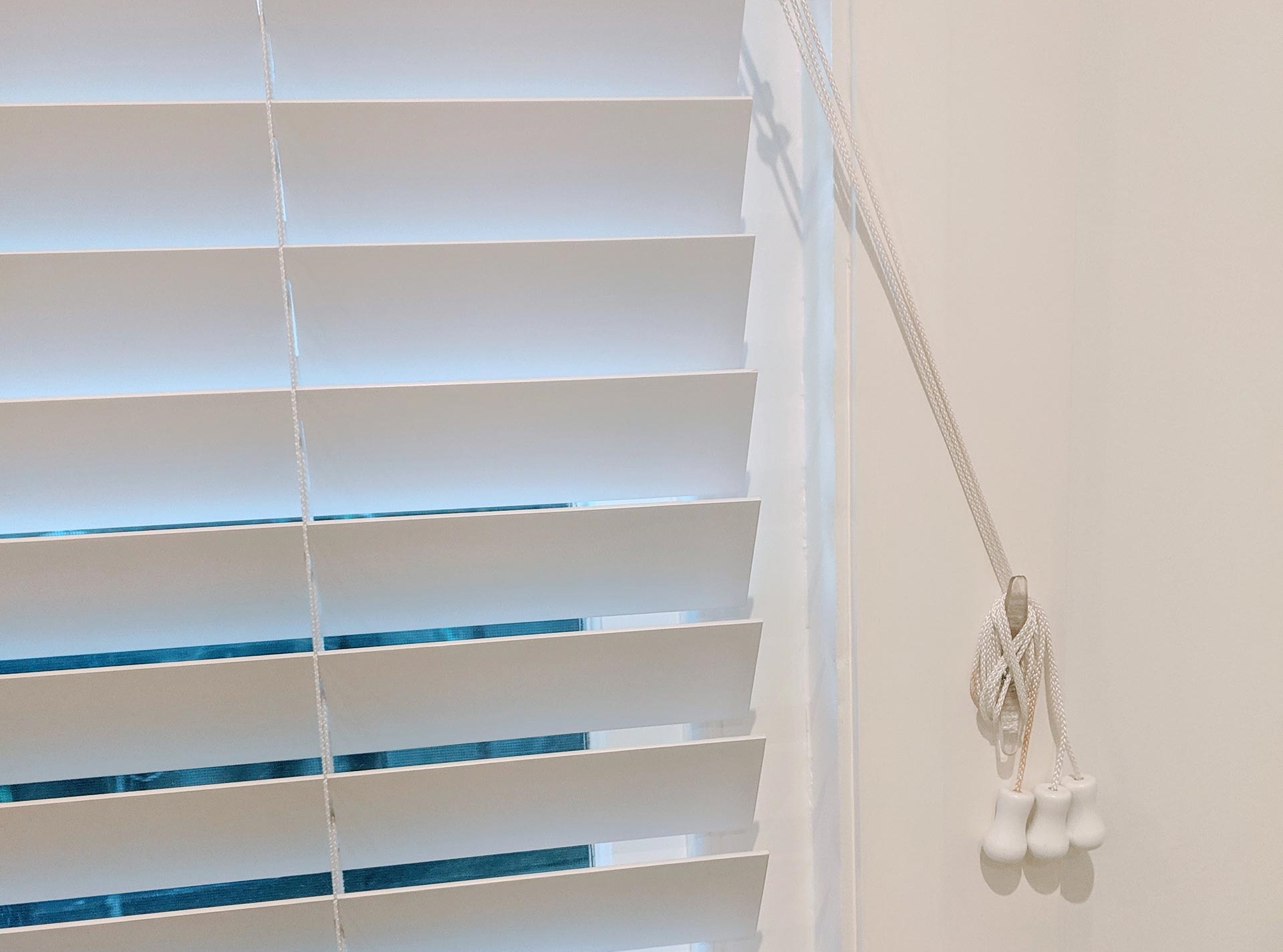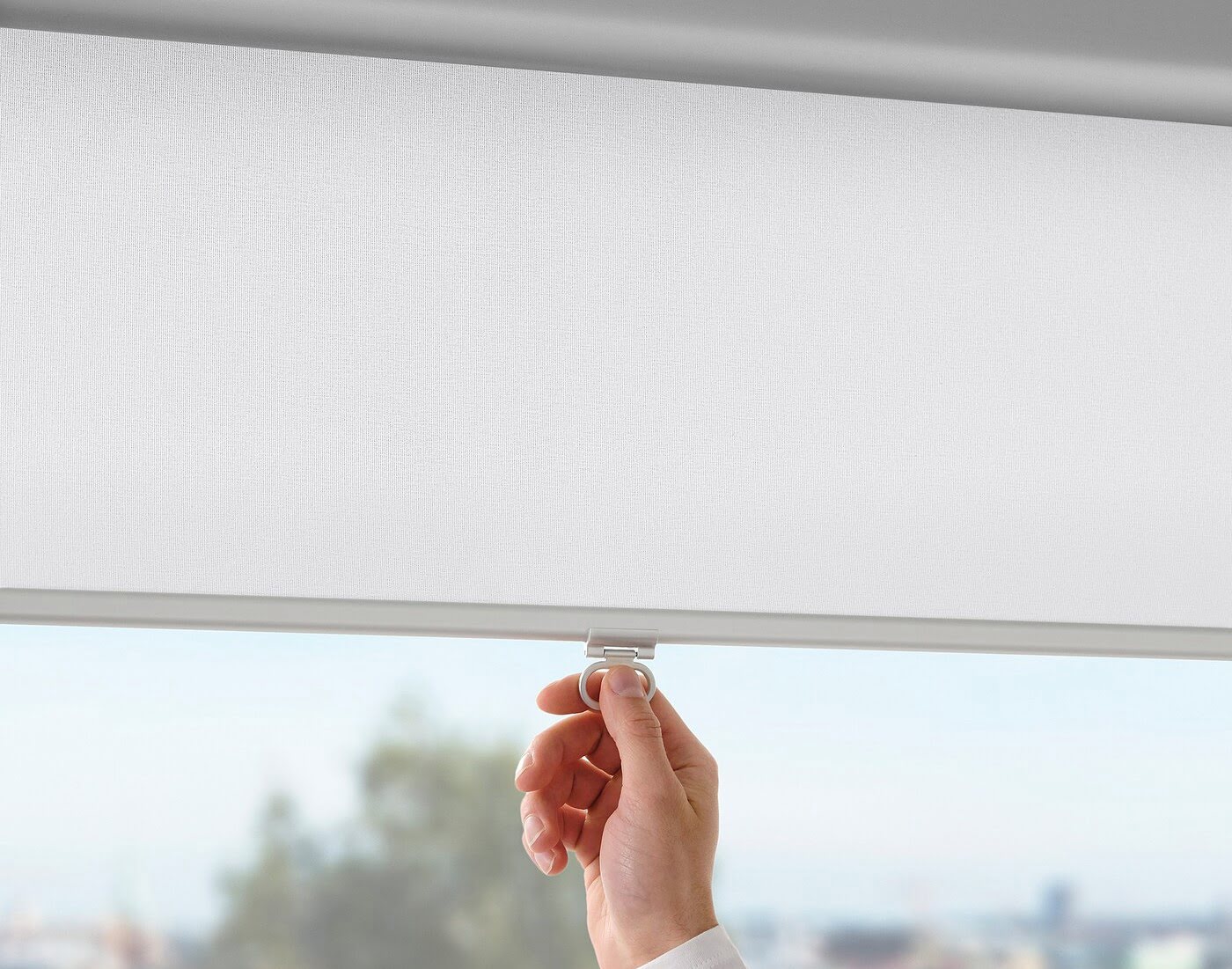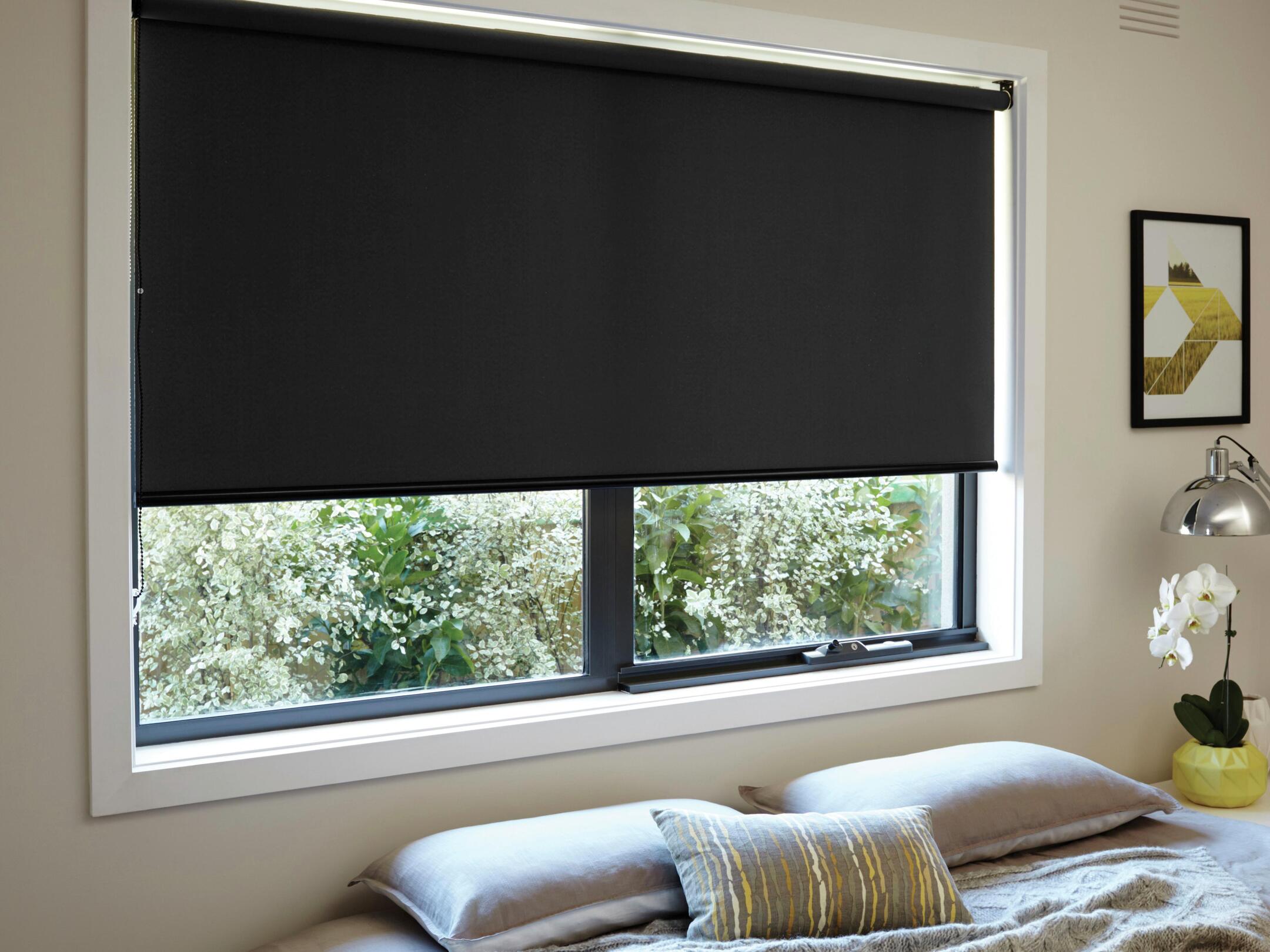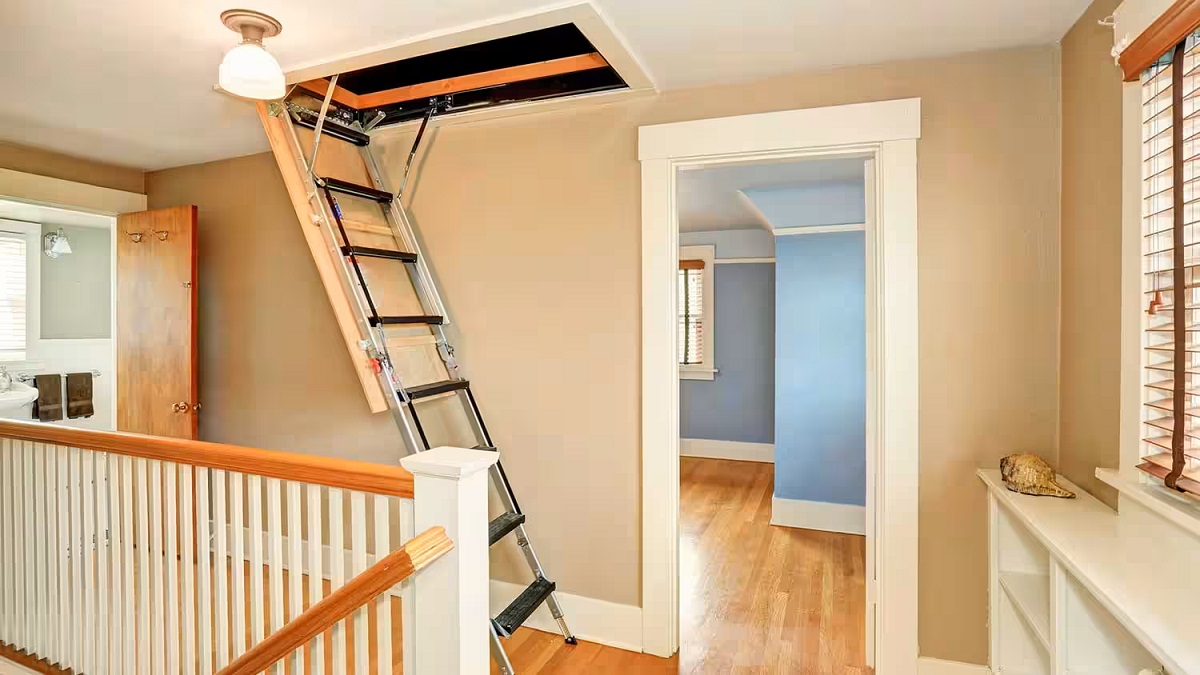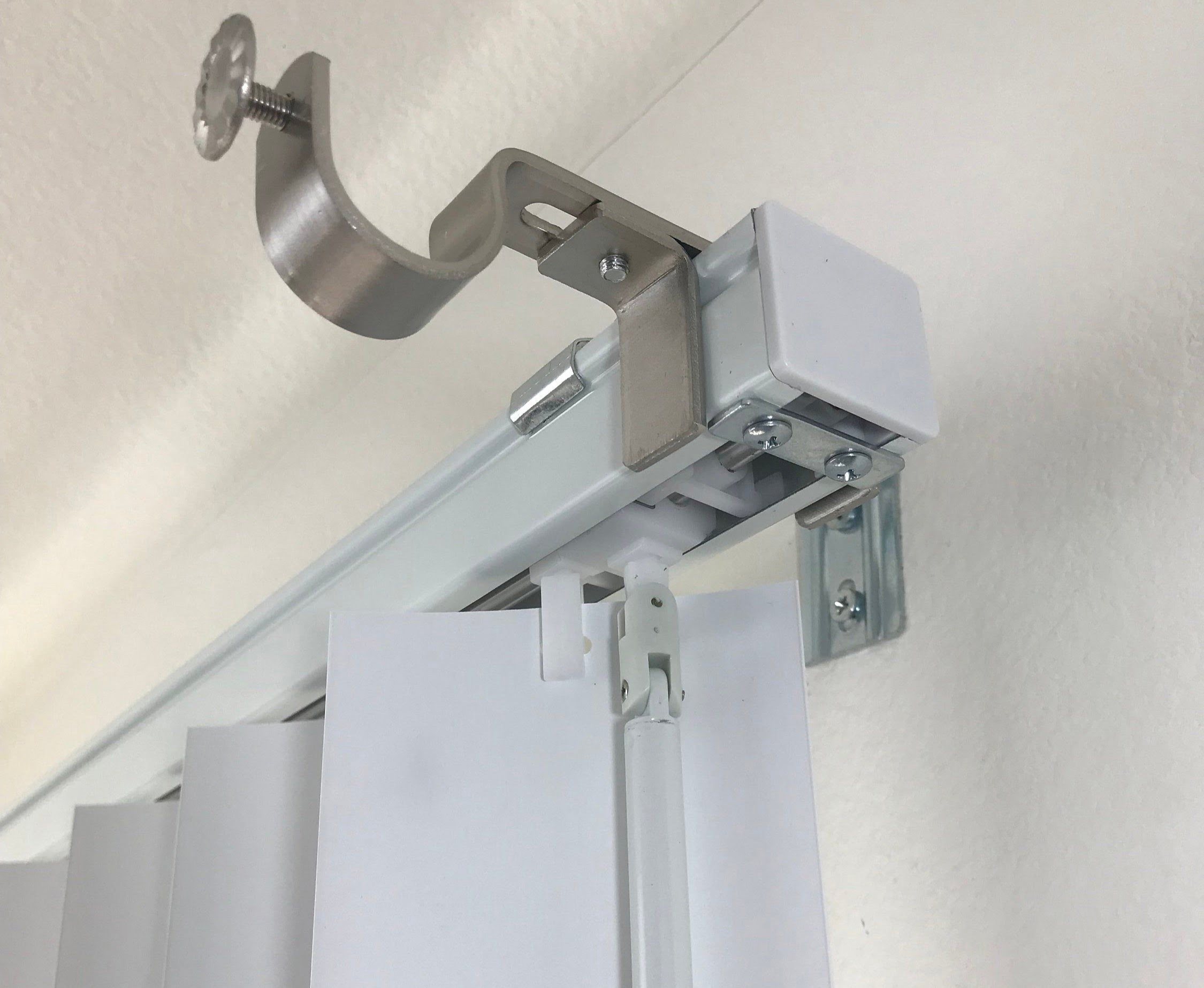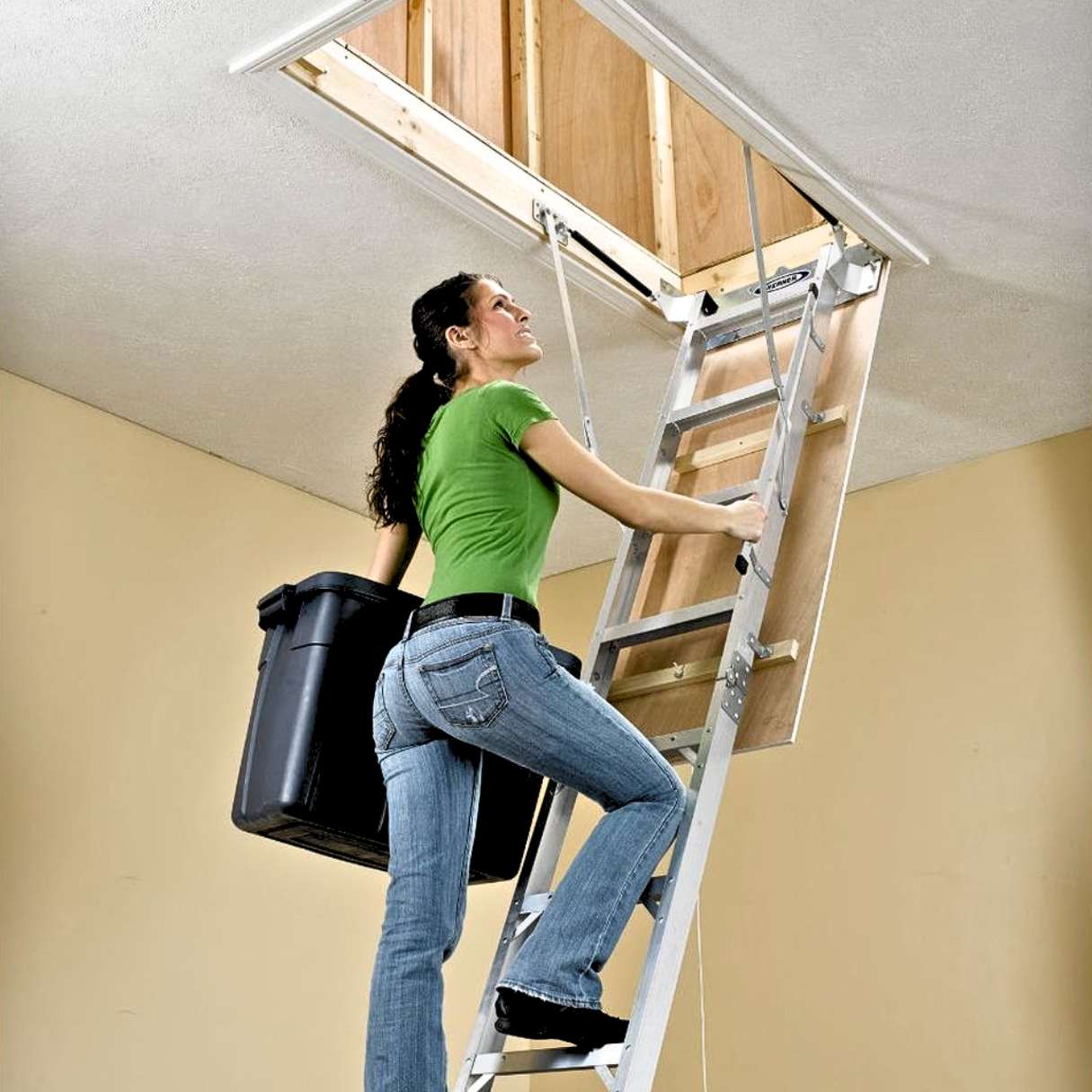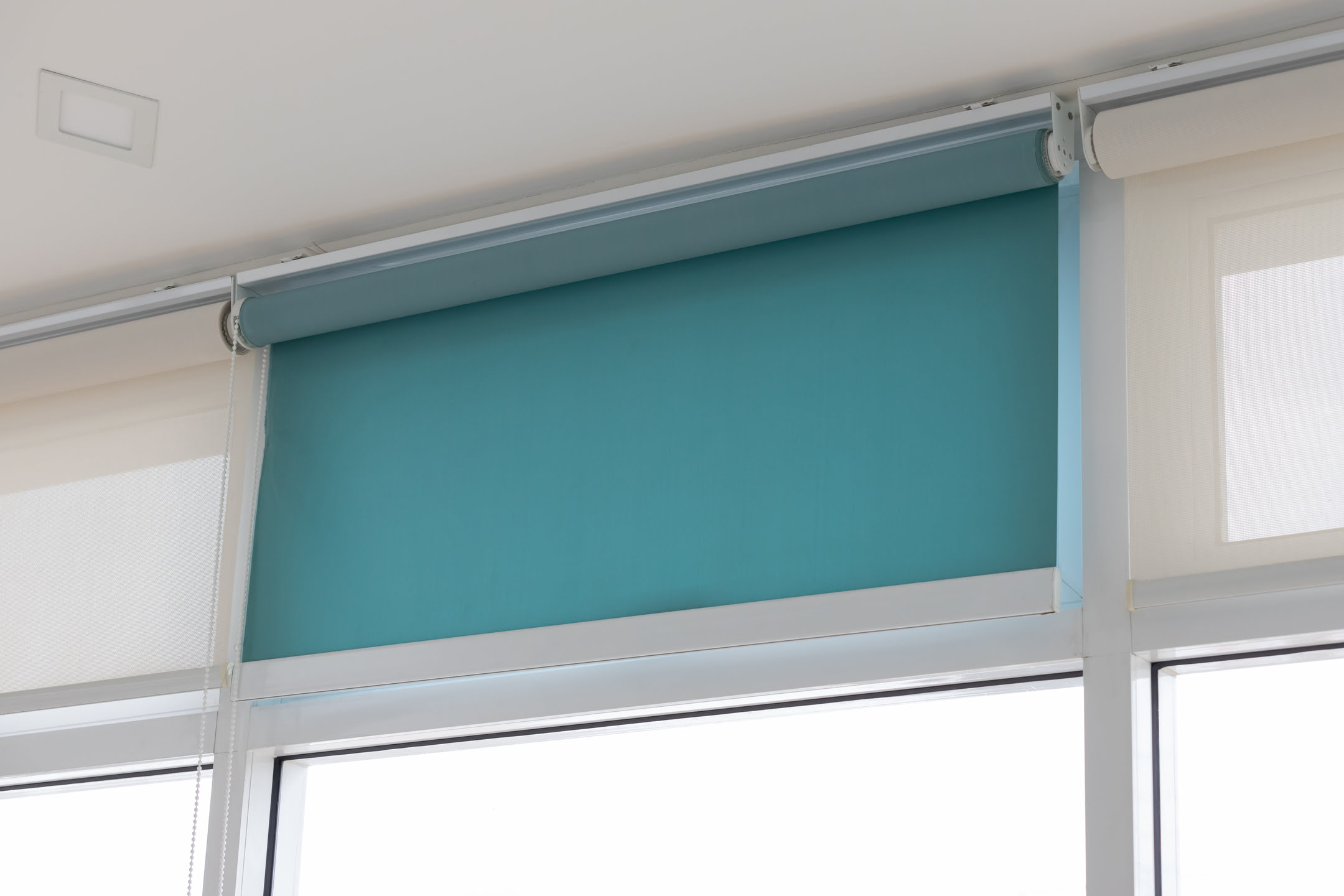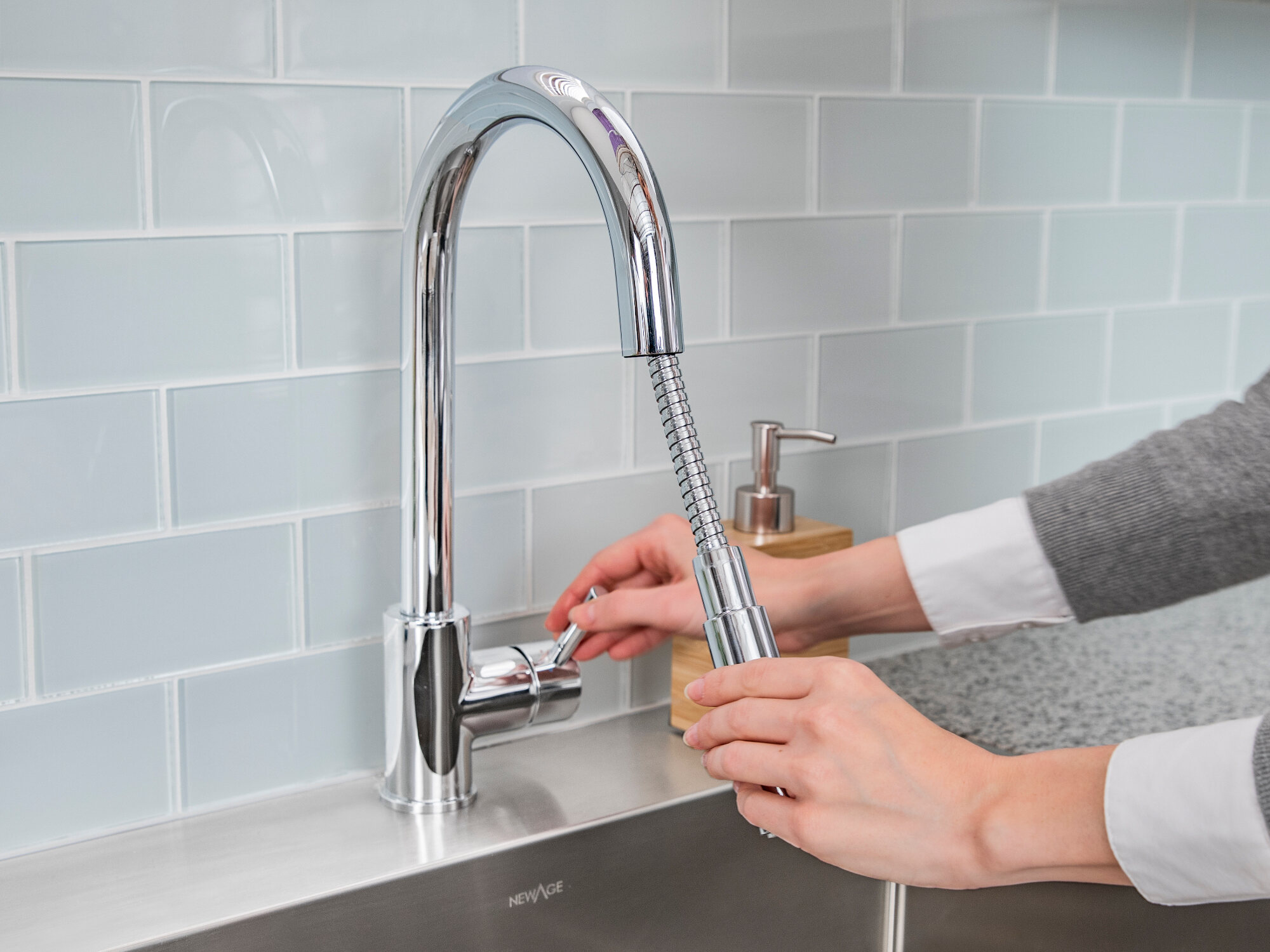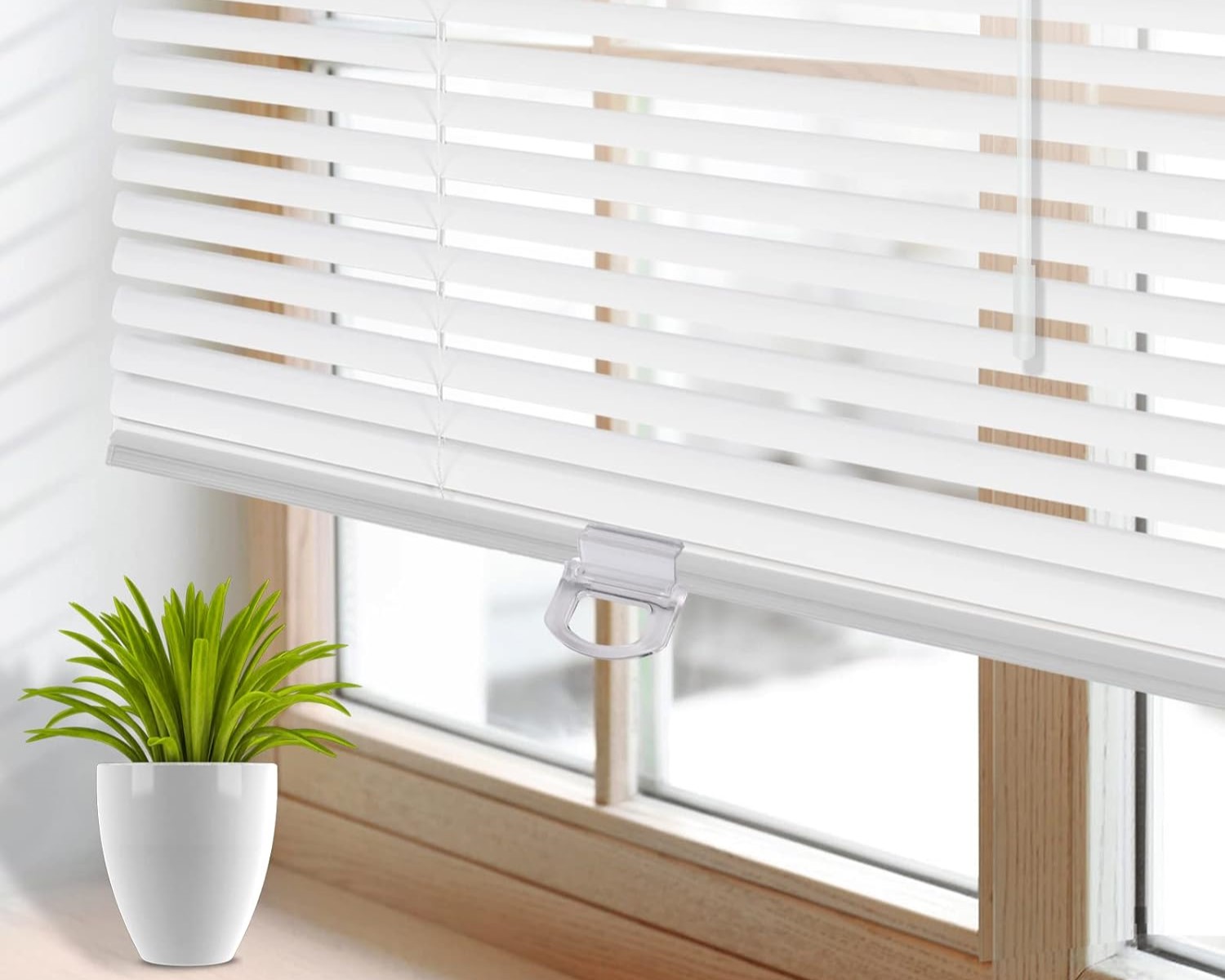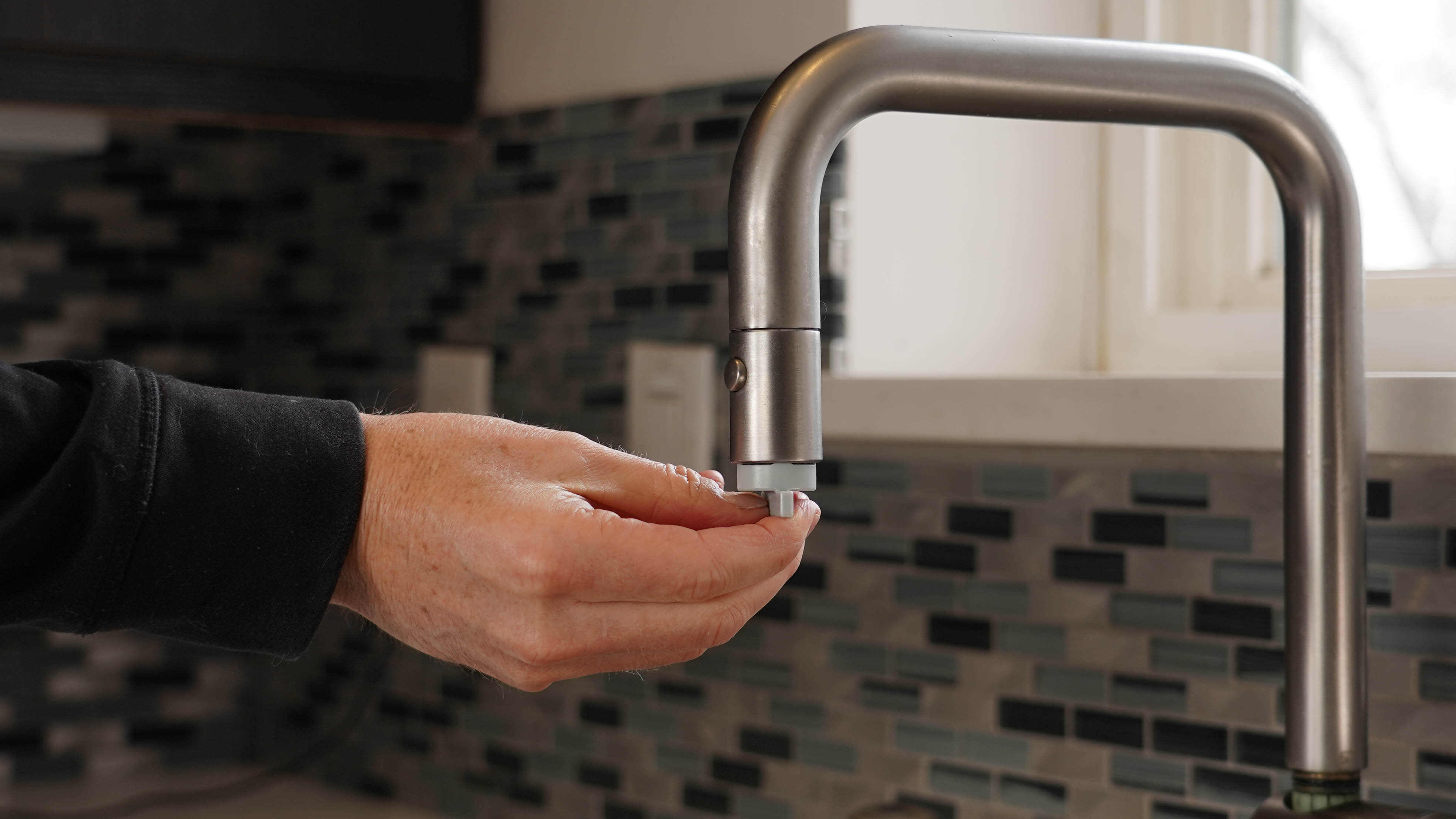

Articles
How To Pull Blinds Down
Modified: January 24, 2024
Learn the step-by-step process of pulling blinds down with our informative articles. Discover the easiest and most efficient ways to handle blinds effortlessly.
(Many of the links in this article redirect to a specific reviewed product. Your purchase of these products through affiliate links helps to generate commission for Storables.com, at no extra cost. Learn more)
Introduction
Blinds are a popular window covering option that can help control the amount of light and privacy in a room. Whether you’re looking to let in the warm glow of the morning sun or create a cozy, dimly lit atmosphere in the evening, blinds can be a versatile and functional addition to any space.
However, if you’re new to using blinds or have never quite figured out how to pull them down, don’t worry. In this article, we’ll guide you through the process of pulling down blinds and adjusting them to your desired position.
Before we dive into the step-by-step process, let’s briefly understand the mechanics of blinds. Blinds consist of horizontal or vertical slats that can be tilted open or closed and can also be pulled up or down to cover or uncover the window. The blinds are typically operated using a pull cord or a wand, depending on the type of blinds you have. Now that we have a basic understanding of how blinds work, let’s move on to the steps involved in pulling them down.
Remember, different types of blinds may have slight variations in their operation, so it’s always a good idea to refer to the specific instructions provided by the manufacturer. However, the following steps will give you a general idea of how to pull down most common types of blinds.
Key Takeaways:
- Master the art of pulling down blinds by identifying the type, locating the pull cord, adjusting the slats, and securing them in place for the perfect balance of light and privacy.
- Regular maintenance and cleaning of blinds are essential to prolong their lifespan and ensure they continue to enhance the aesthetic appeal of your space.
Read more: How To Adjust Pull-Down Blinds
Understanding the Mechanics of Blinds
Before we embark on the process of pulling down blinds, it’s important to have a solid understanding of their mechanics. This knowledge will not only help you navigate the steps more confidently but also enable you to troubleshoot any issues that may arise.
Blinds are designed with a series of slats or louvers that can be adjusted to control the amount of light and privacy in a room. These slats can be made from various materials such as wood, faux wood, aluminum, or fabric. The slats are attached to a mechanism that allows them to tilt open or close, as well as raise or lower the blinds.
Depending on the type of blinds you have, they may be operated using either a pull cord system or a wand. Pull cord blinds have a cord that is used to raise and lower the blinds, while wand-operated blinds have a wand-like device that is used to control the movement of the blinds.
Pull cord blinds typically consist of a series of cords that are looped together and attached to a tassel or a plastic grip at the base. These cords run through a series of pulleys and are attached to the bottom rail of the blinds. By pulling the cord, you can raise or lower the blinds to your desired position.
On the other hand, wand-operated blinds have a long, slender rod or wand that is attached to the top rail of the blinds. By twisting or turning the wand, you can tilt the slats to adjust the amount of light coming through. To raise or lower the blinds, you simply need to push or pull the wand up or down.
Now that we have a clear understanding of how blinds are structured and operated, let’s move on to the step-by-step process of pulling down blinds.
Step 1: Identify the Type of Blinds
Before you can correctly pull down your blinds, it’s crucial to identify the specific type of blinds you have. There are various types of blinds available, including roller blinds, Venetian blinds, vertical blinds, and Roman blinds, just to name a few. Each type has its own unique mechanism for operation.
To determine the type of blinds you have, take a closer look at the slats, cords, and any other visible components. Roller blinds, for example, consist of a single piece of fabric that rolls up and down, typically operated by a chain or a spring mechanism. Venetian blinds are characterized by horizontal slats that can be tilted open or closed using a wand or a cord. Vertical blinds have vertical slats that can rotate and slide along a track, usually controlled by a chain or a cord.
By identifying the specific type of blinds, you can better understand how they should be operated and ensure that you follow the correct steps for pulling them down.
If you’re unsure about the type of blinds you have, don’t worry. You can consult the manufacturer’s instructions or do a quick online search using the brand or model name to gather more information. Additionally, you can seek assistance from a professional or someone who may be more familiar with blinds.
Once you have identified the type of blinds you have, you’re ready to move on to the next step: locating the pull cord or wand.
Step 2: Locate the Pull Cord
After identifying the type of blinds you have, the next step is to locate the pull cord. The pull cord is an essential component for operating the blinds and is used to raise and lower them to the desired position.
In most blinds, the pull cord is located on one side of the blinds, usually attached to the bottom rail or near the edge of the blinds. It may be a single cord or a set of cords, depending on the type and design of the blinds.
To locate the pull cord, visually inspect the blinds and look for a dangling cord or set of cords. You may also find a small plastic grip or handle attached to the cords, making it easier to grasp and manipulate.
Once you have located the pull cord, it’s important to ensure that it is untangled and free from any obstructions. Gently inspect the cord and remove any knots or twists that may hinder its smooth operation.
It’s worth noting that some blinds may have a cord lock mechanism, which allows you to secure the blinds in place once they are pulled down. The cord lock is typically located near the top of the blinds and can be activated or released by pulling the cord in a specific direction.
Remember to handle the pull cord with care and avoid pulling it with excessive force, as this can cause damage to the blinds or result in the cord becoming detached from the mechanism.
Now that you have located the pull cord, it’s time to move on to the next step: pulling down the blinds.
Step 3: Pull Down the Blinds
Now that you have located the pull cord, it’s time to pull down the blinds. This step involves gently pulling the cord to lower the blinds to your desired position.
Before you begin, ensure that you have a firm grip on the pull cord. If the blinds are high or out of reach, you may need to use a step stool or ladder to reach the cord comfortably.
To pull down the blinds, simply give a gentle tug on the cord in a downward direction. As you pull, you should start to see the blinds lowering, allowing more light to enter the room or providing privacy, depending on your preference.
It’s important to pull the cord smoothly and evenly to prevent any jerky movements or damage to the blinds. If you encounter resistance or the blinds don’t lower as expected, pause and check for any obstructions or tangled cords that may be hindering their movement.
For blinds with a cord lock mechanism, you may need to release the cord lock by pulling the cord in a particular direction. Refer to the manufacturer’s instructions or look for any markings on the cord lock to determine the correct direction for releasing the lock.
Continue pulling down the blinds until they reach your desired position. It’s important to note that blinds can be adjusted to various heights, allowing you to control the amount of light or privacy in the room.
Once the blinds are pulled down, take a step back and assess their position. Make any necessary adjustments by gently tugging the cord to raise or lower the blinds slightly. This will allow you to achieve the perfect balance of light and privacy.
With the blinds successfully pulled down, it’s time to move on to the next step: adjusting the position of the slats, if applicable.
When pulling down blinds, always use both hands to avoid putting strain on the mechanism. Gently guide the blinds down to prevent any damage.
Read more: How To Pull Down Cordless Blinds
Step 4: Adjust the Position
Once you have pulled down the blinds to your desired height, the next step is to adjust the position of the slats. This step is particularly relevant for blinds such as Venetian blinds or vertical blinds, where the slats can be tilted open or closed to control the amount of light and privacy.
To adjust the position of the slats, you will typically use a wand or a cord, depending on the type of blinds you have.
If you have wand-operated blinds, locate the wand attached to the top rail of the blinds. The wand is usually a long, slender rod that can be twisted or turned to tilt the slats. With a gentle grip on the wand, rotate it in one direction to tilt the slats open, allowing more light to enter. Rotate it in the opposite direction to close the slats, providing more privacy.
For cord-operated blinds, this step may involve adjusting the position of the slats by pulling on the cord or cords in a specific manner. Refer to the manufacturer’s instructions or markings on the cord lock to determine the correct direction for tilting the slats.
As you adjust the position of the slats, take your time to find the perfect balance of light and privacy that suits your needs. Experiment with different positions to determine the optimal angle for the slats.
It’s important to note that not all types of blinds have the ability to adjust the position of the slats. For blinds such as roller blinds or Roman blinds, this step may not be applicable.
After you have adjusted the slats to your liking, take a moment to appreciate the new ambiance in the room. The properly positioned slats can create a beautiful play of light and shadows, enhancing the overall aesthetic.
With the slats in the desired position, it’s time to move on to the next step: securing the blinds in place.
Step 5: Secure the Blinds in Place
Once you have pulled down the blinds and adjusted the position of the slats, it’s important to secure them in place to prevent any accidental movement or disruption. This step is particularly relevant for blinds that use a pull cord system.
Many blinds have a cord lock mechanism that allows you to lock the blinds at a specific height. The cord lock is typically located near the top of the blinds, and it can be released or engaged by pulling the cord in a specific direction.
To secure the blinds in place, start by pulling the cord downward gently. As you do so, you should feel some resistance. Continue pulling until you reach the desired height, and then release the tension on the cord. This should engage the cord lock and hold the blinds in position.
If you need to readjust the blinds or change their height, simply pull the cord in the opposite direction to release the cord lock. This will allow you to freely move the blinds up or down as needed.
It’s important to ensure that the blinds are securely locked in place to prevent them from accidentally raising or lowering. This will provide stability and peace of mind, especially in areas with frequent activity or gusty winds.
If your blinds do not have a cord lock mechanism, you may need to use other methods to secure them in place. One common option is to tie a knot or use a cord cleat to prevent the pull cord from unravelling or becoming tangled. Always follow the manufacturer’s guidelines for securing the blinds without compromising their functionality.
With the blinds securely locked in place, you can enjoy the desired level of light and privacy, knowing that they won’t unexpectedly move or shift.
Now that you have secured the blinds, it’s time to move on to the final step: maintaining and cleaning the blinds for long-lasting use.
Step 6: Maintain and Clean the Blinds
Proper maintenance and regular cleaning are essential to keep your blinds looking their best and functioning smoothly. Over time, dust, dirt, and other debris can accumulate on the slats, affecting their appearance and operation. Follow these steps to effectively maintain and clean your blinds:
- Dust regularly: Use a soft, dry cloth or a feather duster to gently remove dust from the slats. Start at the top and work your way down, ensuring you cover both sides of the blinds. If you have Venetian blinds, you can also use a microfiber cloth or a blind cleaning tool specifically designed to clean between the slats.
- Vacuum with a brush attachment: For blinds with dense or fabric slats, vacuuming can be an effective method to remove dust and dirt. Use a vacuum cleaner with a brush attachment and run it along the slats gently, ensuring that you cover both sides.
- Spot clean stains: If you notice any stains or spots on the blinds, lightly dampen a soft cloth with mild soap and warm water and gently rub the affected area. Ensure you wring out the cloth to avoid excessive moisture, as it can cause damage to the blinds.
- Consider deep cleaning: Depending on the material of your blinds, you may need to occasionally deep clean them. For example, fabric blinds may require professional cleaning, while vinyl or aluminum blinds can be cleaned with a non-abrasive sponge or cloth damped with mild soap and water.
- Check and replace damaged slats: Periodically inspect your blinds for any damaged or broken slats. If you notice any, consider replacing them to maintain the overall integrity and functionality of the blinds. Consult the manufacturer’s instructions on how to remove and replace slats.
- Protect blinds from excessive moisture: Moisture can be detrimental to certain types of blinds, such as wood blinds. Avoid installing blinds in areas prone to high humidity, such as bathrooms or kitchens, or take precautions to protect them from direct contact with moisture.
By regularly maintaining and cleaning your blinds, you can prolong their lifespan and ensure they continue to enhance the aesthetic appeal of your space.
Now that you have learned how to maintain and clean your blinds, you have successfully completed all the necessary steps to properly pull down, adjust, secure, and care for your blinds. Congratulations!
Remember, always refer to the manufacturer’s instructions for specific guidance on maintaining and cleaning your blinds, as different types of blinds may require different care methods.
With your blinds properly maintained and cleaned, you can enjoy their functionality and beauty for years to come!
Thank you for reading this guide on how to pull down blinds. We hope that you found it helpful and informative. If you have any further questions or need assistance, don’t hesitate to seek advice from a blinds professional or contact the blinds manufacturer.
Happy blinds pulling!
Conclusion
Blinds are a versatile and practical window covering option that allows you to control the amount of light and privacy in a room. Knowing how to properly pull down and adjust blinds is essential for maximizing their functionality and achieving the desired ambiance in your space.
In this comprehensive guide, we have explored the step-by-step process of pulling down blinds. We began by understanding the mechanics of blinds and identifying the specific type of blinds in your home. We then located the pull cord and pulled down the blinds to the desired height, adjusting the position of the slats if applicable. We secured the blinds in place using cord locks or other methods to prevent any accidental movement. Lastly, we discussed the importance of regular maintenance and cleaning to keep your blinds looking their best.
By following these steps and taking care of your blinds, you can enjoy the benefits of enhanced privacy, controlled lighting, and a visually appealing window covering that complements your home decor.
Remember, each type of blinds may have slight variations in their operation, so it’s always a good idea to refer to the specific instructions provided by the manufacturer. Additionally, seeking professional advice or assistance when needed can ensure the efficient and proper functionality of your blinds.
We hope that this guide has empowered you with the knowledge and confidence to pull down and maintain your blinds smoothly. Now, go ahead and enjoy the perfect balance of light, privacy, and aesthetics that blinds can bring to your living space!
Thank you for reading, and happy blinds pulling!
Frequently Asked Questions about How To Pull Blinds Down
Was this page helpful?
At Storables.com, we guarantee accurate and reliable information. Our content, validated by Expert Board Contributors, is crafted following stringent Editorial Policies. We're committed to providing you with well-researched, expert-backed insights for all your informational needs.

